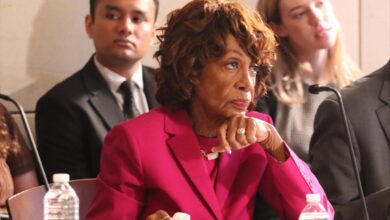California Flu Rates are Highest in 4 Years: Here Is how to Protect Yourself

By Edward Henderson | California Black Media

Flu cases in California have surged to the highest levels the state has seen in years.
By the end of January, 26% of tests sent to state laboratories had come back positive for influenza. This is a significant increase compared to flu season peaks over the past 4 years, according to the most recent data captured by the California Department of Public Health (CDPH) on respiratory viruses.
Flu-related deaths in California are also on the rise. As of Jan. 25, 2.4% of deaths in the state (484 people) were attributed to influenza this season, compared to 1.6% last season.
California Black Media (CBM) spoke with Dr. Jerry P. Abraham, a Los Angeles-based Physician and Public Health advocate who currently serves as the Director & Chief Vaccinologist of the CDU-KEDREN Mobile Street Medicine program in Los Angeles. He explained why cases of the flu may be increasing and preventative measures people can take to protect themselves until the flu season ends next month.
“Be fully vaccinated. It’s not too late to get the flu shot for this flu season. We stop giving it out about March every year,” said Abraham.
“Be fully boosted with COVID-19 vaccines as well. This is a very tenuous time because people are not fully vaccinated,” he continued.
The United States Centers for Disease Control and Prevention (CDC) recommends that “everyone 6 months or older get a flu shot — ideally by the end of October to boost protection against the disease during high-circulation winter months.
Dr. Scott Flinn, regional medical director for Provider Partnerships at Blue Shield of California, says people should be aware of flu symptoms and be able to recognize them.
“These symptoms can come on suddenly and hit hard,” says Flinn. “If you start feeling unwell, it’s important to rest and monitor your condition closely, especially if you are in a higher-risk group, including elderly individuals, pregnant women, young children, or those with chronic health conditions.”
Typically, those symptoms include fever, chills, cough, sore throat, runny or stuffy nose, muscle or body aches, headaches, fatigue and, for some people – especially children – may experience vomiting and diarrhea.
Flu symptoms typically last five and to seven days, though fatigue and cough can persist for two weeks or longer in some cases.
If contracted, Flinn recommends getting plenty of rest, using over-the-counter meds, and taking steps to not spread the flu like staying home for 24-hours after avoiding close contact with others. He also advises that people fighting the flu should get plenty of rest; use over-the-counter medication; and consult a healthcare professional.
Abraham also recommends wearing masks when out in public if you are exhibiting flu symptoms. He also urges individuals who have insurance to schedule appointments with their primary physician as emergency rooms and urgent cares have become overcrowded.
While the cause of the spike in flu cases is still unknown, Abraham attributes some of the causation to changes in climate and rising temperatures across the state.
“That is why these bugs, these viruses, these bacteria are behaving in these new novel ways because we’re just not used to living amongst them like this; living in these warmer temperatures, getting more infected. There’s more of us too, and we’re interacting in different ways. We’re interacting with animals in different ways, industry, all those things. They’re all coming together and so we’ve got a perfect storm,” he said.
The Bay Area is reporting the highest rates of flu-related hospital admissions in the state at 9.9 per 100,000 people, compared to 9.1 in Southern California, 7.5 in Los Angeles, 7.3 in the Greater Sierra-Sacramento region, 5 in Central California and 2.8 in the rural northern part of the state, according to the California Department of Public Health.
“It really is incumbent upon us and each other to do what we did during COVID when no one came for the Black community to help us. We need to look after each other. If you’re sick, stay home,” Abraham said. “Remember, there are elders and there are cancer patients and people living with all sorts of conditions that they cannot afford to get sick.”




